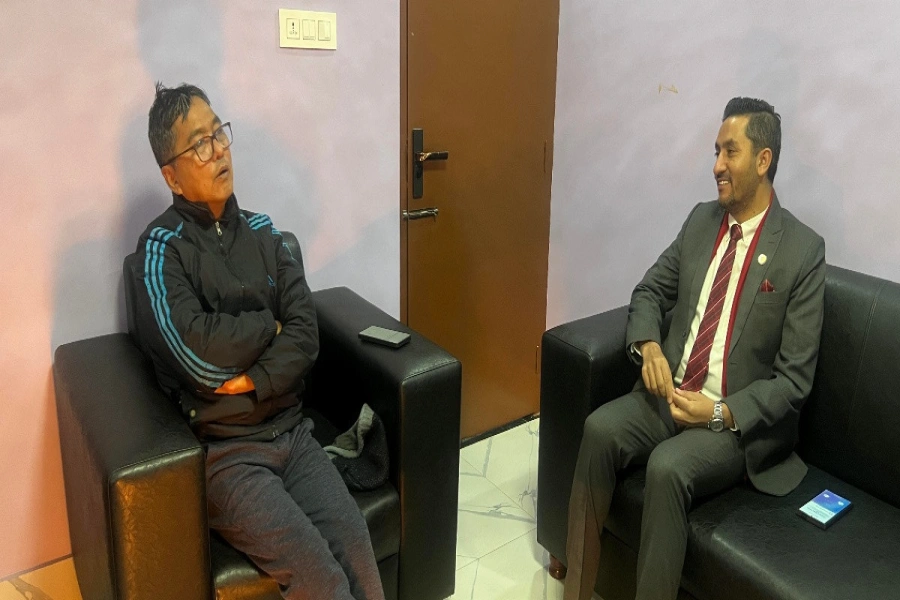“Did you not read about the issue on Facebook or Twitter? It was all over social media!” These questions are often common conversation starters. Such expression comes from the assumption that similar to the TV news broadcast, everyone gets the same content on Facebook and other social platforms. But a cursory glance at each other’s phones is enough to debunk that idea, as every content we see on our mobile phones is carefully tailored to spark our interest. With the exponential rise in digital platforms and its users, it has become important to understand social media platforms and how they filter our feeds, how this gives rise to digital echo chambers, and what can proliferate in such chambers.
Role of social media in shaping public discourse
About half of the world’s population--3.8 billion-- is on social media. According to Forbes magazine, young people between 16 to 24 spend on average three hours every day on social media platforms. Social media platforms have been a primary source of news and information to an increasingly large number of people.
Social media is very different from legacy media regarding the publication and propagation of contents. Social media contents are generated by users, and not a body of journalists and editors trying to uphold a brand name. There is little control over what gets published, sometimes leading to distorted news.
There is another question of how the published articles are shared among multiple users over a period of time. Algorithms used in propagation of articles, when created with the objective of getting most interactions, can fragment online communities into isolated bubbles where one mostly sees what they agree to.
Algorithmic creation of digital echo chambers
Two-day Huawei Digital Nepal Conclave 2022

Online media platforms aim to maximize the time and activities of users on their platform. It curates a user’s feed with contents that the user is likely to react to. As users have already spent many years on platforms such as Facebook and Instagram, the sites already have plenty of data on how a user reacts to a particular article on the given topic. With such vast data from all of us, online media sites could create machine learning models to classify new articles into groups based on the language used. Then using historical data regarding frequency and the nature of response of the user towards similar topics in the past, the sites could forecast the possibility of reaction for new articles. Using these probability estimates, they can expose the users to articles that have the highest likelihood of being reacted on.
Though we do not know the exact algorithms that are being used, we are indeed aware of the following three points: i) As a corporation, many media platforms can maximize its value by optimizing how much a user is active on its platform; ii) There are machine learning solutions to curate feed and maximize user reactions; and iii) Social media such as the Facebook has enough data from our past activities to train those machine learning models.
It is safe to say that social media platforms have been curating our feed to elicit more reactions from us. A case in point being an argument that we call “the social media bubble”. Let’s say there are four people with A and B supporting an argument, and C and D opposing the argument. If A posts something about the argument, B will like it but C and D would not. Based on this past behavior, when A posts something new about the argument, B will see it but C and D might not even see the article because they had not given reaction to a similar article before. Over time, A and B will live in a bubble where they only see the favorable position on the topic and C and D will live in a bubble where they only see the other side of the argument.

Social Media Bubble
This will ultimately lead to the creation of an echo chamber: “an environment where somebody encounters only opinions and beliefs similar to their own, and does not have to consider alternatives”. Similar analogy has been derived to understand the digital echo chambers that most of us are now inadvertently part of.
In order for knowledge to progress, it is vital that competing ideas and divergent viewpoints are vigorously debated– perhaps in the lines of German Philosopher Fitche’s thesis-antithesis-synthesis triad, which implies presence of an idea, followed by a contradictory point that negates the first point and then finally, a resolution of both– a synthesis that resolves the conflict between the thesis and antithesis, forming a new proposition.
However, it seems that public discourse is over time algorithmically channeled into echo chambers.
Effects of digital echo chambers
Echo chambers can contribute to divisive arguments to proliferate at an expedited speed. Such echo chamber or ideology bubbles lead to distorted reasoning and thus, reinforces, what behavioral economists call the confirmation bias--people are drawn towards information or evidence that reinforces their preexisting notions and preconceptions, and that they steer away from conflicting views. Such developments can be attributed to deep polarization of ideas and beliefs that the society is currently witnessing. The Economist argues that lack of proper mechanism to allow dissenting voices to be heard can lead to social fragmentation with societies being colored with populism and extreme nationalism. Diversity of perspectives which is essential for societal progress can be suppressed where alternate opinions and opinion makers are heavily reprimanded.
From misinformation to disinformation
When the number of clicks determine profit margins, it becomes difficult to distinguish verified news from the orchestrated ones. One such example from recent memory being the news of the return of swans and dolphins in the Canals of Venice due to the COVID-19 induced lockdown (which was widely circulated but later was found to be untrue). The audience do not yet have the right tools to verify such information, the echo chambers are rather bred and buttered by inaccurate information. Young people, in particular, form a large demographic group of social media users, and they may not have the necessary agency to acknowledge that the content we view online can influence our thoughts and behaviors. This is a dangerous trajectory that could ultimately skew policy discourse and contort political climate. For instance, social media disinformation was said to manipulate voter’s perceptions and thus interfere with the US presidential election in 2016.
Moving forward: Informed citizens and re-engagement of policy makers
The first step towards recovering from a cognitive bias is to acknowledge the bias. The public needs to be aware that they may be living in virtual bubbles. Until social media platforms see the harm of digital echo chambers and curtail its creation by making their models more flexible, which means allowing people of opposing viewpoints to see each other’s points at least once in a while, or allowing users to consciously react to positions that they are exactly not in favor of but want to learn more about so that they will not be denied similar posts later on, it is important for people to understand that differing viewpoints might exist in other groups. People also need to be more conscious of the idea that there is misleading content on the Internet. Just because it keeps showing up on your feed does not mean it is true. People should apply critical thinking and research on the sources so that they are not misinformed.
Apart from raising such awareness, policy makers should also focus on regulating online platforms. People need the right tools to make informed decisions based on sound judgment and factually correct news. Public access to expert opinions is also vital here. Alongside bursting digital bubbles, it is also essential to extricate oneself from the offline echo chamber where experts are said to only engage with experts in the ivory tower of exclusivity. Engagement with the public and across sectors should thus be intensified to accommodate divergent perspectives. More collaboration among researchers, policy makers, academia to foster debates, which is vital for progressing knowledge, is the need of the hour. Creating a vibrant social media landscape with varied views should also be encouraged alongside fact-checking provisions for the public and emphasis on access to expert opinion.
Dharel has a master's degree from the London School of Economics. She writes on policy issues.
Dhungana has a degree in economics from Princeton University. He is into programming and machine learning.



































